E-bike adoption worldwide is steadily increasing and likely to continue for years to come.
However, the industry is experiencing strengthening headwinds in the form of the (perceived) dangers from e-bike batteries.
Just how significant is the challenge?
How much might it affect the industry?
What are the other factors involved?
Contents
The End of E-bikes?
Dan Parsons posted Co-Founder and Head of B2B at Fully Charged e-bikes has over 15 years experience in the e-bike industry.
He describes his time positively, but also one in which he has had to overcome obstacle after obstacle citing the importance of pushing ahead with developing sustainable transport, reducing carbon emissions, traffic congestion as well as citizens’ health and well-being in general.
The latest obstacle is the blanket banning of e-bikes due to fire hazard stemming from e-bikes modified with cheap electronics.
In a 2024 LinkedIN post, Parsons declared
“R.I.P. E-BIKE INDUSTRY. SORRY, WE TRIED…” rejecting condemning all e-bikes due to the failings of a tiny proportion. The overwhelming majority of e-bikes are carefully designed and rigorously tested to stringent quality and safety standards and thus pose no risk to third parties.
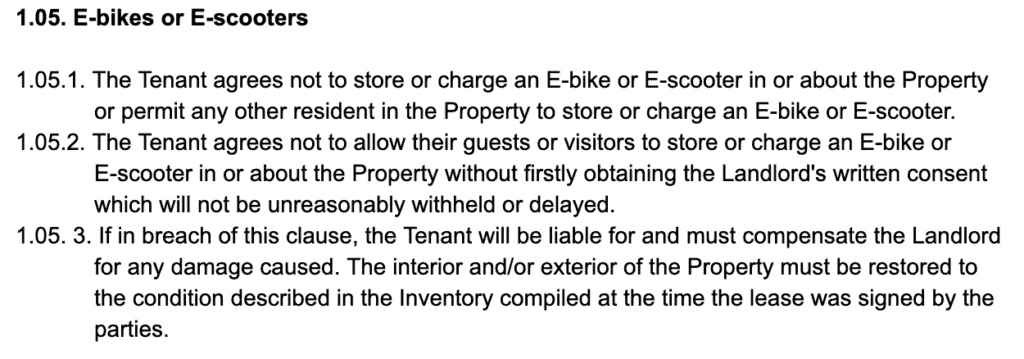
Stipulations similar as these are now appearing in lease agreements and make it impossible for tenants—a key market in modern urban environments—to own e-bikes.
On-street storage is ruled out due to the high risk of theft which in itself is a key reason why prospective e-bike owners decide not to purchase in the first place.
Is Battery Fire Danger Purely a Technical Issue?
The risk of loss of life or property from battery fires is actually much smaller than it appears—yet another example of exaggerated amplification that comes from the media shining a spotlight on any subject that grinds their gears as it were..
The apparent increase in mayhem from exploding e-bike batteries is due to poor-quality batteries often lacking an adequate BMS, or any BMS, along with corrosion and physical damage.
However, the number of “incidents” in the USA for example is complicated by e-scooters and e-motorbikes being incorrectly classified as “e-bikes” in reports. The actual figure in comparison to the sheer number of e-bikes is minuscule.
Nevertheless, we can see that the consequences of the perception of hazard may can impact the industry heavily, as the above example of landlords excluding e-bikes from their properties shows. Besides, if all deaths due to battery fires can be avoided, that’s a worthy goal in itself, which hardly needs mentioning.
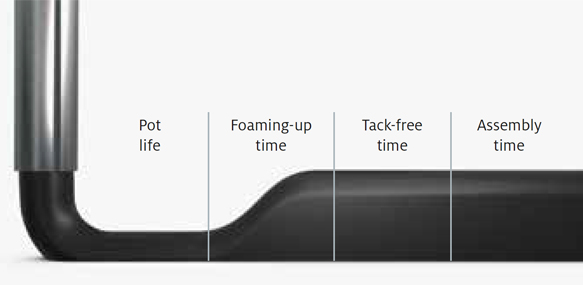
sonderhoff.com
Innovations making batteries safer from the effects of wear and tear have been around for a while (Luna Cycle and Grin Technologies) and appear to be ramping up.
Sonderhoff provides a “system solution” for battery makers to seal housings against the entry of moisture and be more insulated from shocks. Pedego has followed Rad Power Bikes in announcing their addition of a heat-absorbing resin to batteries which seals and stabilizes individual battery cells.
Technical solutions are one thing. But the arbitrary insertion of blanket bans into lease agreements are another. Given that the technical solutions are at hand, the problem is one of public relations.
Widely recognized certification along with consistent brand efforts to educate the public folded into campaigns specifically targeting landlords may be necessary to effectively counter the increasingly erroneous perception of widespread or massive battery hazard.
Disadvantages of E-bikes
The general public’s incorrect understanding of e-bike technology is shaping up to be a key hinderance to ongoing adoption. Even the authoritative publication, autoevolution, is not immune.
In their consideration of 10 disadvantages of e-bikes, the technical issue presents as the problem of e-bike maintenance commencing with the argument that maintaining “conventional” bikes (written as “e-bikes” which is assumedly a typo) is “fairly simple”.
If you’ve ever watched in videos on FIRST’s YouTube channel (not to mention the hoards of other videos on multiple channels about diagnosing technical problems and carrying out mechanical maintenance) the claim that non-e-bikes are simple does not hold.
E-bikes generally come with cloud connectivity allowing manufacturers to diagnose problems on the go. Components are largely modular, the quintessential modular component being the battery.
The article extends the point into the third claim of dubious technical reliability with battery “overcharging” an issue in long-term battery degradation.
They do have a point on environmental impact (Point 9) though. E-bikes are perceived as part of the answer to emissions reductions which discounts the greenhouse gasses generated during manufacturing. Local air quality is improved without necessarily reducing net carbon emissions.
In sum, erroneous understanding promulgated by influential entities is arguably the main problem, not technical malfunction.
The Problem with E-bike Incentives
An obvious tactic to encourage e-bike purchases in the face of the two biggest obstacles to sales, price and the risk of theft (and we may add the increasing resistance of landlords to this) is to offer incentives.
A new study looks closely at the effectiveness of several types of e-bike purchase incentives in relation to the investment required to induce an e-bike purchase where it may otherwise not happen.
Incentives do spur extra e-bike purchases, yes—but they come at a high price in comparison to the climate benefits. The researchers find that it takes around US$4,000 in incentives to generate one additional e-bike purchase because 80% of those buyers would not have bought without the discount. (They also make the comparison with electric cars which require $30,000 of incentives to generate a sale).
The conclusion is that “the argument for allocating public funds for e-bike incentive programs must be based on the co-benefits of e-bike travel and ownership, and not solely on GHG reduction.”
Other recent research answers key questions about whether voucher programs that subsidize electric bike purchases are truly good for the planet and the cities that pay for them. The answer is a qualified yes—GHG reduction is not as much as you would think or like and they suggest that the other benefits such as “improved public health, reclaimed street space and enhanced equity of mobility” alone support e-bike adoption.
So, there’s no argument that e-bikes are not good for the environment. It’s just they’re not that good compared with alternative policy directions—and the key benefits extend way beyond GHG emissions reduction.
E-bike Market Strategy: Go for the Niche? Or not?
Despite increased disincentives to purchase an e-bike, the cycling public nonetheless continues to embrace them; benefits outweigh disadvantages.
Anyone in the industry can’t help but notice that the space has become fiercely competitive not least because of the number of high-tech electrical firms as well as famous brand auto makers that have jumped into the space. Success or failure depends on your business model and having the industry experience to sense the right direction to go in.
Being big, prestigious and a salubrious legacy does not guarantee success. The legacy car companies have not found the going easy. (McLaren has just released their hope for a successful play in the e-bike space).
Bikemag touches on a core issue in a recent look at QuietKat’s addition of a hybrid e-bike to their lineup:
“The potential problem with having a bike that does many things and tries to appeal to multiple categories of users is that it may do a few things well but not anything spectacularly.”
In other words, ‘the riches are in the niches’ as the old e-commerce saying goes—the heading of this section is ironic, of course.
Briefly, QuietKat’s niche has been off-road adventure cycling, fat-ish e-bikes that get enthusiasts out into the countryside without going full fat bike.
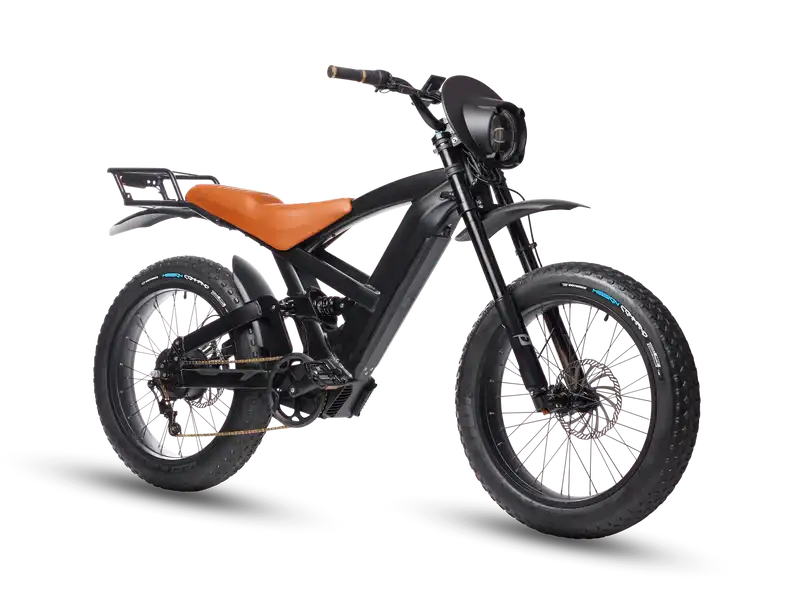
The new Lynx aims at enticing urban commuters who also like to get out into the backcountry. One bike to get you both to work and into office detox outdoors on the weekends.
The author of this article notes the suitability of the bike to both environments and reading between the lines it seems to be a thumbs up for the Lynx.
Legacy motorcycle companies may well be watching how this one fares across the summer since they have aimed at a similar segment of the market without perhaps the depth of knowledge of that market that a company such as QuietKat brings to the design process.
Understanding the mindset of your targeted niche is the right place to start; it makes all the difference.
Spotlight on E-bike Tech
Here’s this month’s look at some notable releases into the market.
Orbic’s 5G-connected, AI-powered e-bike perhaps prefigures the tech array that will become standard across e-bikes in the future. And note, this is not a bike company but a mobile device company!

Image: Rob Pegararo; embedded from PCmag
Three cameras, one front, one rear, and one mounted above a 7-inch touch screen provide enhanced safety and the built-in ability to record a ride or stream a ride in real time.
In a world where social media interprets and thus shapes so much of our day-to-day experience and has become crucial to how many of us interact with our social networks, this model slots right in.
The two wheels are almost incidental to the existential significance of this machine which is an extension of the signature device in our modern world. In a sense, the bike is an optional plug-in to the communicative capability that nearly everyone relies on.
Pedego have launched what, in their view, is the next generation of e-bikes. The triumvirate consists of an adventure model, a cargo model, and a trike, a practical approach for getting people and their stuff from A to B, in a fun way, and with regard to environment in which that usage occurs. The first and the third are of most interest.
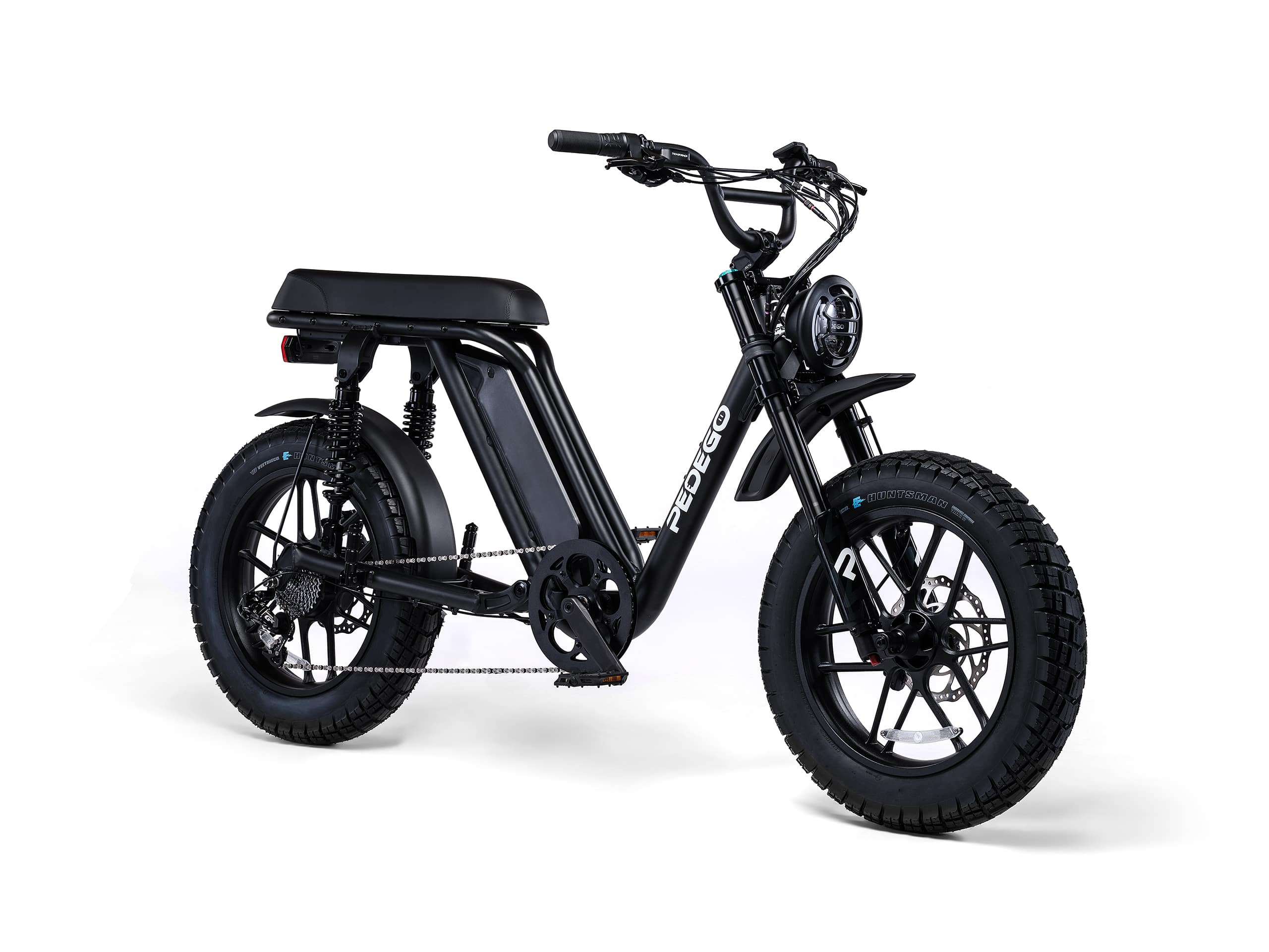
The adventure MOTO is for consumers after a rugged on-road/off-road (but mainly off-road) unit . . . where looks are not necessarily important. A long range, powerful battery, on fat tires—and adding an optional rack gets it into cargo-ish territory.
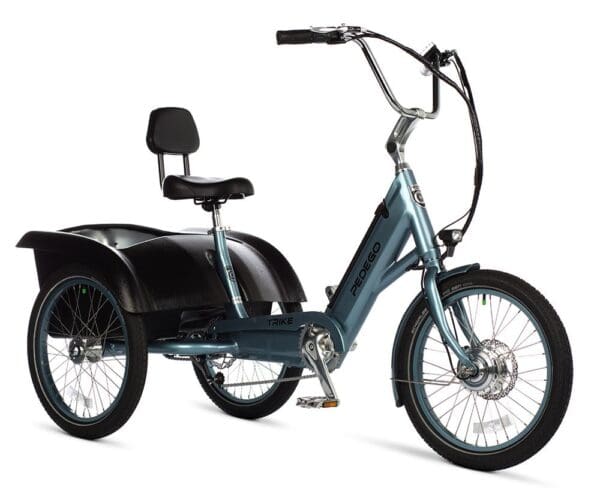
The cargo model basically extends the MOTO, but the trike is interesting, a category that is yet to be exploited by brands. Here in Taiwan, non-electric trikes have been in use forever as de-facto cargo bikes, a practice going back decades. Stability is a key feature as a tradeoff for maneuverability—the extra width adds a degree of inconvenience on narrow streets and laneways. And on the subject of battery safety, all models employ the “potting” of cells with heat insulating resin.
Headwinds merely slow things down. Despite these challenges to e-bike adoption, e-bikes—in conjunction with AI—will continue to dominate the world of micromobility.
